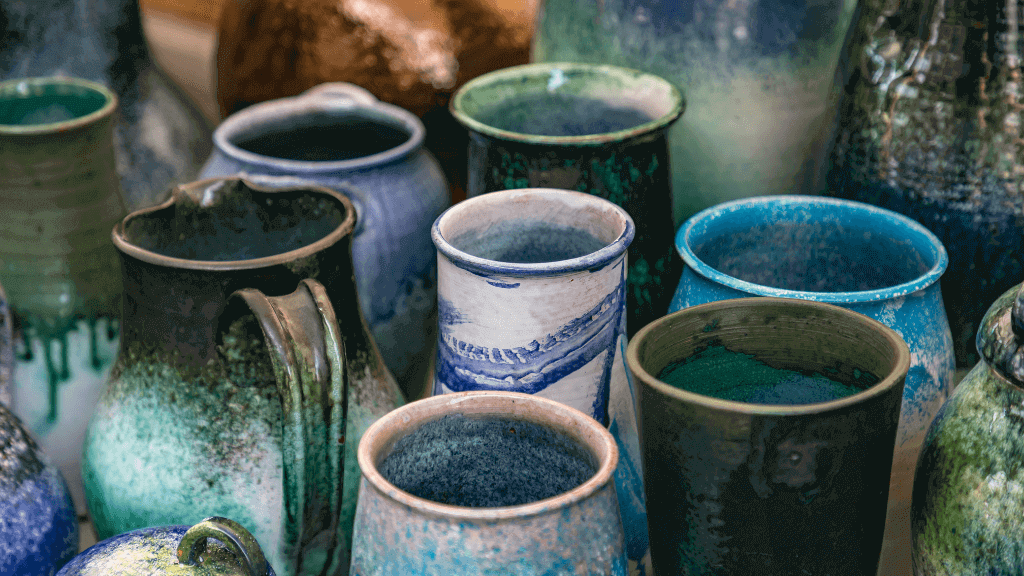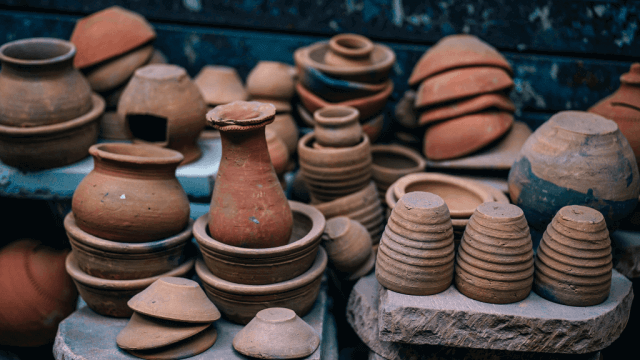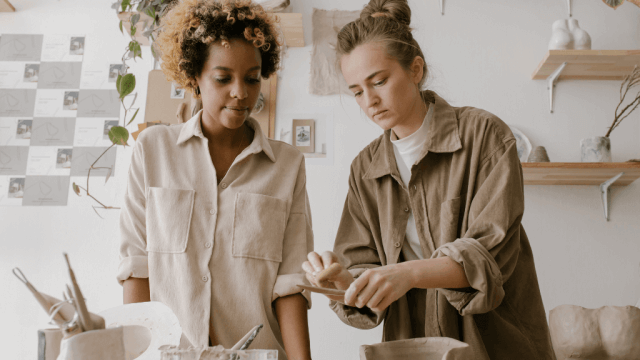The correct spelling for making ceramic ware is “pottery.”
Correct Spelling of Pottery
The accurate spelling for making ceramic ware is “pottery.”
How do you pronounce “pottery”?
The word “pottery” is pronounced as “pah-tuh-ree”. Here is a breakdown:
- “pah” is like the word “pot” without the “t” sound
- “tuh” is like the “tu” in “tub”
- “ree” sounds like the word “ree” in “free”
Pottery Basics
Pottery is a craft that molds and shapes clay or similar materials into decorative or functional items, such as bowls, vases, mugs, and plates. Various techniques are used in pottery, including hand-building, throwing on a wheel, and slip casting.
Hand-Building Techniques
There are several hand-building methods to create pottery:
- Pinching – shaping small to medium pieces of clay using the fingers
- Coiling – stacking rolled-up ropes of clay and blending the seams
- Slab building – connecting rolled-out flat pieces of clay to form a shape
Pottery Wheel Throwing
A pottery wheel is a mechanical device that rotates clay, allowing the potter to control the shape of the piece. Throwing on a pottery wheel demands skill and practice but results in symmetrical and smooth ceramic objects.
Slip Casting Technique
Slip casting involves pouring a liquid clay mixture, called slip, into a plaster mold. Once the clay solidifies, the mold is separated, revealing the clay object, which then undergoes firing and glazing.
Firing and Glazing Pottery
Firing pottery in a kiln is a crucial step that hardens the clay and makes it durable. The temperature and duration of the firing process depend on the type of clay and desired outcome. Glazing adds color and a protective layer to the pottery, enhancing its appearance and increasing durability.
Types of Clay for Pottery
There are various types of clay available for pottery, each with its own unique properties and benefits:
- Earthenware – a porous, low-fire clay that is easy to work with, ideal for beginner potters
- Stoneware – a durable, mid-to-high-fire clay, suitable for functional and decorative pieces
- Porcelain – a high-fire clay, known for its fine texture, translucency, and strength
- Raku – a low-fire clay developed for the unique raku firing process, which generates colorful and unpredictable results
Essential Tools for Pottery
To create beautiful pottery, having the right tools is essential. Here are some basic tools every potter should have in their toolkit:
- Needle tool – for cutting and piercing clay
- Rib tool – for shaping, smoothing, and refining the surface of clay
- Wire tool – for slicing through large portions of clay and removing pottery from the wheel
- Modeling tools – for carving, shaping, and adding detail to clay work
- Sponge – for moistening and cleaning the surface of the clay
History of Pottery
Pottery has a long and diverse history, dating back to the Neolithic period (around 10,000 BCE). Early pottery included functional vessels, such as cooking pots and storage containers, as well as ritualistic and decorative items. As societies evolved, so did pottery techniques and styles, resulting in a rich, global heritage of ceramic art and craft.
Pottery Classes and Workshops
For beginners interested in learning pottery or experienced potters looking to further develop their skills, local art centers, craft schools, and pottery studios often offer classes and workshops. These educational experiences provide hands-on instruction in various pottery techniques, including hand-building, wheel throwing, glazing, and firing.
Common Pottery Questions
Here are some frequently asked questions that provide straightforward and helpful information on pottery for those interested in the craft.
What is the difference between pottery and ceramics?
Pottery is a specific type of ceramics focused on creating objects using clay. Ceramics is a broader term that includes all objects made from inorganic and non-metallic materials that are subjected to high temperatures, including glass, porcelain, and pottery.
How long does it take to learn pottery?
The time required to learn pottery varies depending on the individual’s skill level, dedication, and the specific techniques they wish to master. While basic skills can be learned in a few weeks or months, achieving proficiency and mastery may take years of practice.
How can I find pottery classes near me?
Local art centers, craft schools, and pottery studios often offer pottery classes. You can search online, inquire at an art supply store, or check your local community centers for workshops and courses in pottery.
How are pottery pieces fired in a kiln?
Pottery pieces are typically fired in a kiln through a process called bisque firing, which hardens the clay and prepares it for glazing. During firing, the kiln temperature is gradually increased to the desired level and maintained for a specific period of time. After cooling, the pieces are removed and glazed before undergoing a final firing for the glaze to fuse with the clay.
What are some safety precautions to consider when working with pottery?
While working with pottery, it is essential to follow safety precautions to protect yourself and others. Some key considerations include proper ventilation to avoid inhaling dust, wearing gloves when handling chemicals or glazes, and using caution when operating a kiln to avoid burns or other injuries.











